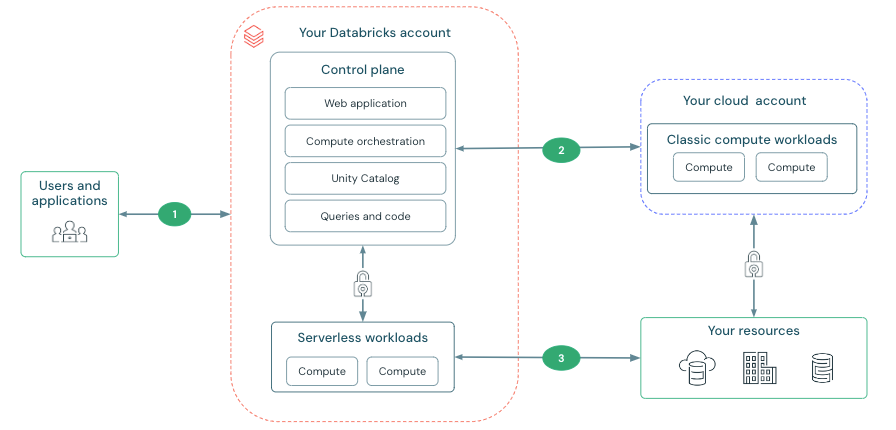Networking
This article introduces networking configurations for the deployment and management of Databricks accounts and workspaces.
Note
There are currently no networking charges for serverless features. In a later release, you might be charged. Databricks will provide advance notice for networking pricing changes.
Databricks architecture overview
Databricks operates out of a control plane and a compute plane.
The control plane includes the backend services that Databricks manages in your Databricks account. The web application is in the control plane.
The compute plane is where your data is processed. There are two types of compute planes depending on the compute that you are using.
For classic Databricks compute, the compute resources are in your Google Cloud resources in what is called the classic compute plane. This refers to the network in your Google Cloud resources and its resources. Classic compute plan resources are in the region that your workspace is in.
For serverless compute, the serverless compute resources run in a serverless compute plane in your Databricks account. Serverless compute plan resources are in the same cloud region as your workspace’s classic compute plane. You select this region when creating a workspace.
To learn more about classic compute and serverless compute, see Types of compute. For additional architecture information, see Databricks architecture overview.
Secure network connectivity
Databricks provides a secure networking environment by default, but if your organization has additional needs, you can configure network connectivity features between the different networking connections shown in the diagram below.

Users and applications to Databricks: You can configure features to control access and provide private connectivity between users and their Databricks workspaces. See Users to Databricks networking.
The control plane and the classic compute plane: Classic compute resources, such as clusters, are deployed in are in your Google Cloud resources and connect to the control plane. You can use classic network connectivity features to deploy classic compute plane resources in your own virtual private cloud and to enable private connectivity from the clusters to the control plane. See Classic compute plane networking.
The serverless compute plane and storage: You can configure firewalls on your resources to allow access from Databricks serverless compute plane. See Serverless compute plane networking.
You can configure your GCP storage networking features to secure the connection between the compute plane and Google Cloud storage. For more information, see Networking recommendations for Lakehouse Federation.
Connectivity between the control plane and the serverless compute plane is always over the cloud network backbone and not the public internet.